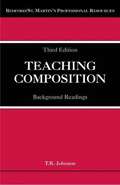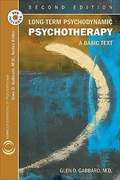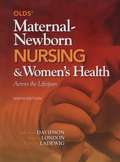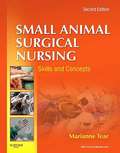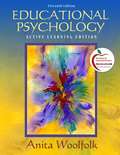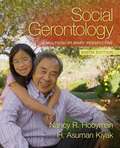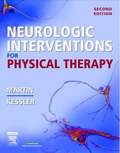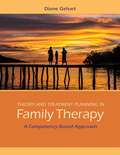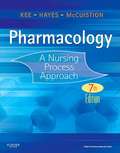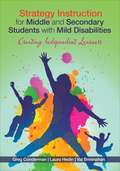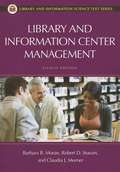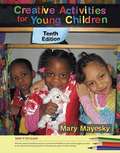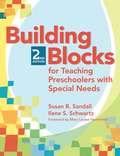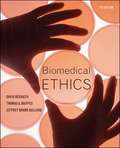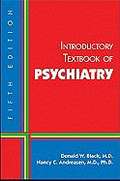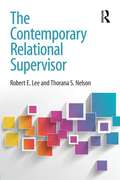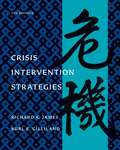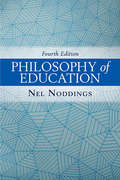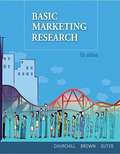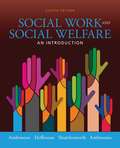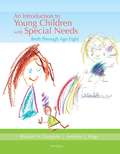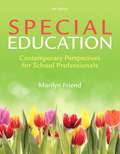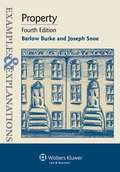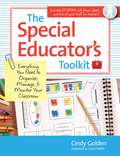- Table View
- List View
Teaching Composition: Background Readings (3rd Edition)
by T. R. JohnsonThis selection of readings is designed to help the reader acquire or broaden a theoretical and practical background for teaching college-level composition.
Long-Term Psychodynamic Psychotherapy: A Basic Text (Second Edition)
by Glen O. GabbardAt the time Dr. Glen O. Gabbard's first edition of Long-Term Psychodynamic Psychotherapy came out in 2004, the Psychiatry Residency Review Committee (RRC) mandated that all psychiatric residents must become competent in five different psychotherapies, including psychodynamic psychotherapy. Just a few years later, the RRC reduced the number of mandated psychotherapies from five to three, with psychodynamic psychotherapy being one of the triad needed in training. Also during that time, much rigorous research appeared in the pages of major psychiatric and psychological journals further confirming the efficacy and value of psychodynamic psychotherapy. Long-Term Psychodynamic Psychotherapy: A Basic Text, Second Edition, is focused on the key concepts, assessment, indications, formulations, therapist interventions, goals of therapy, and the mechanisms of therapeutic action all mental health professionals need in their daily clinical experience. In this manual, Dr. Gabbard expands on the application of basic theory and techniques in actual clinical practice. Therapeutic topics are brought to life on a companion DVD that gives students and residents a visual reference to the text through video vignettes of a senior clinician at work. As useful to educators as it is to students, Long-Term Psychodynamic Psychotherapy serves as a guide to understanding the thinking behind the therapist's actions in a wide variety of situations. This "fly on the wall" glimpse into therapeutic mechanisms helps future psychologists, social workers, licensed counselors, nurses and others put psychodynamic psychotherapy into the proper context for long-term, successful treatment. This manual delves into the goals of therapy and the mechanisms for therapeutic action, including: #149; Assessment#149; Indications and formulation#149; Therapist intervention#149; Using fantasies and dreams in therapeutic action#149; Identifying and working with countertransference#149; Optimal use of supervision In addition to the DVD that serves as a guide to understanding the thinking behind the therapist's choices, this book also features a greatly expanded discussion of the evidence base for psychodynamic psychotherapy and a more extensive discussion on gender in transference. It also updates the neurobiological correlation between dreaming and its implications in psychotherapy and elaborates on the contribution of resistance to contemporary thinking. Equally important, Long-Term Psychodynamic Psychotherapy provides its readers with a clear road map to greater understanding through practical, hands-on application such as case writeups, oral presentations at case conferences, written examinations, oral examinations, videotaped recordings and direct observations, audiotape recordings, and supervision to help build competent skills and broad knowledge.
Olds' Maternal-Newborn Nursing & Women's Health Across the Lifespan (9th Edition)
by Michele R. Davidson Marcia L. London Patricia A. Wieland LadewigThis family-focused text that provides comprehensive coverage of maternal-newborn nursing and women’s health with special attention to evidence-based practice, cultural competence, critical thinking, professionalism, patient education, and home/community care. Accurate, readable, personal, and engaging, OLDS' MATERNAL-NEWBORN NURSING & WOMEN'S HEALTH ACROSS THE LIFESPAN, 9/e reflects a deep understanding of pregnancy and birth as normal life processes, and of family members as partners in care. This edition includes a deeper discussion of childbirth at risk; four new nursing care plans; updated coverage of contraception, complementary/alternative therapies, and much more. New teaching features include Professionalism in Practice and Health Promotion Education boxes, Clinical Judgment case studies, and Critical Thinking questions. This edition also aligns more closely with AACN’s Essentials of Baccalaureate Education for Professional Nursing Practice.
Small Animal Surgical Nursing (Second Edition)
by Sara J. Busch Marianne TearCovering the veterinary technician's role and responsibilities in small animal surgery, Small Animal Surgical Nursing: Skills and Concepts, 2nd Edition helps you gain exceptional clinical competency. Topics include asepsis, operating room protocol, instrumentation, sterile technique, suture materials, suturing techniques, wound management, surgical assistance, and pre- and postoperative care of animals. Full-color photographs show instruments and equipment, and help you develop skills in sterile technique, suturing techniques, and wound management. Written by noted educator Marianne Tear, this edition expands coverage of emerging issues and hot topics such as nutritional therapy and physical therapy. Complete coverage of small animal surgical nursing describes the roles and responsibilities of the veterinary technician. A focus on exceptional clinical skills and practice tips helps you gain clinical competency in small animal surgical technique. Clear, full-color photographs show instruments, equipment, sterile technique, suturing techniques, and wound management. Performance objectives at the beginning of each chapter and key points and review questions at the end of each chapter focus and reinforce learning. Practical appendices make it easy to look up dosage calculations, how to quickly set IV fluid drip rates, and how to make up various solutions of medications for constant rate infusions. More than a dozen new illustrated procedures are added to this edition. More real-world examples and best practices are added. Common complications are described for each surgical procedure, with discussions of how to avoid or prepare for these situations. A consistent organization discusses each surgery in terms of pre-op considerations, patient positioning and prep, equipment, the tech's role, and common complications. Instructions follow the order of the procedure: sterilization and gloving and gowning are located in Chapter 1. More rationales are included, covering topics such as different methods of sterilization and catheter placement. Increased coverage of nutritional therapy and physical therapy is added to the chapter on postoperative care. Key terms, chapter outlines, review questions, and a glossary make learning easier. The companion Evolve website includes instrument identification exercises and other workbook-like study activities.
Educational Psychology (11th Edition)
by Anita WoolfolkThe eleventh edition of the book continues to emphasize the educational implications and applications of research on child development, cognitive science, learning, teaching, and assessment.
Social Gerontology (9th Edition)
by Nancy R. Hooyman H. Asuman KiyakThe primary focus of this book is on social gerontology and to present the diversities of the aging experience, the interaction between biological, psychological, social and cultural forces on aging, and the heterogeneity of the older population in a multidisciplinary manner.
Neurologic Interventions for Physical Therapy (Second Edition)
by Mary Kessler Suzanne Tink MartinNow completely updated with the latest information on both adult and pediatric patients, this comprehensive book provides a link between the pathophysiology of neurologic deficits and possible rehabilitation interventions for improving movement outcomes. It introduces the structure and function of the nervous system and describes normal motor development, motor control and motor learning, pathophysiology of the nervous system and common treatment techniques used in physical therapy practice. This edition also features updated terminology from the APTA's Guide to Physical Therapist Practice, as well as new chapters on proprioceptive neuromuscular facilitation (PNF) and other neurological conditions seen in the adult. Helpful learning aids and abundant illustrations highlight key concepts and help readers quickly master the material. Helpful learning aids - such as objectives, tables, illustrated intervention boxes, and review questions - reinforce important facts and concepts. Review questions at the end of each chapter allow readers to test their understanding of the material. 700 illustrations clearly depict procedures discussed in the text and clarify descriptions of anatomy, physiology, evaluation, pathology, and treatment. Background information is provided for interventions that can be used in the rehabilitation of adults and children, promoting a complete understanding of techniques. Careful documentation uses current outcomes-based research. Case histories include subjective and objective observation, assessment, planning, and critical decision-making components. Current language of the APTA's Guide to Physical Therapist Practice, 2nd Edition is used throughout, aligning all information with best practices put forth by the APTA. A new chapter on proprioceptive neuromuscular facilitation (PNF) describes how these techniques can be used to improve performance of functional tasks by increasing strength, flexibility, and range of motion.
Theory and Treatment Planning in Family Therapy: A Competency-Based Approach
by Diane R. GehartTHEORY AND TREATMENT PLANNING IN FAMILY THERAPY: A COMPETENCY-BASED APPROACH prepares readers for the realities of practicing therapy. This book's outcomes-based approach engages readers in an active learning process, introducing family therapy theories using theory-specific case conceptualization and treatment planning. These assignments empower readers to apply theoretical concepts and develop real-world skills as early as possible in their training. The author uses a down-to-earth style to explain concepts in clear and practical language. She also includes extensive discussions about how diversity issues and research inform contemporary practice of family therapy.
Organizational Behavior (Sixteenth Edition)
by Stephen P. Robbins Timothy A. JudgeLong considered the standard for all organizational behavior textbooks, Organizational Behavior provides the research you want, in the language your students understand. This text continues its tradition of making current, relevant research come alive for students. The Sixteenth Edition has been thoroughly updated to reflect the most current recent research for Organizational Behavior, while maintaining its hallmark features –clear writing style, cutting-edge content, and engaging pedagogy. There’s a reason why Robbins textbooks have educated millions of students and have been translated into twenty languages—and it’s because of a commitment that provides the kind of engaging, cutting-edge material that helps students understand and connect with Organizational Behavior. For undergraduate and graduate courses in Organizational Behavior
Pharmacology: A Nursing Process Approach (7th Edition)
by Joyce Lefever Kee Evelyn R. Hayes Linda E. MccuistionFeaturing concise, straightforward coverage, Pharmacology: A Nursing Process Approach, 7th Edition puts nursing pharmacology concepts and essential drug calculation skills into a practical nursing context to prepare you for real-world drug administration responsibilities. This edition has been revised and updated with the most current nursing pharmacology information available. Innovative features such as Prototype Drug Charts, Nursing Process Summaries, an extensive math/dosage calculation section, and NCLEX Examination-style study questions make nursing pharmacology more understandable than ever. Unique! Prototype Drug Charts provide easy access to key information on dosages, contraindications, drug-lab-food interactions, pharmacokinetics, and more for more than 100 drugs. Unique! An extensive, color-coded dosage calculation section covers six methods of dosage calculation - basic formula, ratio and proportion, fractional equation, dimensional analysis, and dosing by body weight and body surface area - eliminating the need for a separate dosage calculation book. Nursing Process Summaries present client care and drug therapy within the framework of each step of the nursing process, including information on client teaching and cultural and herbal considerations. Preventing Medication Errors boxes reinforce concepts introduced in the medication safety chapter and highlight common errors that occur in clinical practice to help you ensure safe drug administration. Herbal Alerts provide a quick reference to side effects, drug interactions, and additional information for popular herbs you may encounter in practice. A fully updated bioterrorism appendix helps you recognize the clinical manifestations of bioterrorism weapons and respond with appropriate nursing care. Unique! Illustrated overviews of normal anatomy and physiology in all drug therapy chapters help you understand how drugs work in various body systems. Critical Thinking Case Studies at the end of each chapter challenge you to apply your knowledge and analytical skills to realistic client scenarios. NCLEX Study Questions for each chapter help prepare you for the growing pharmacology coverage on the NCLEX Examination. Answers are listed upside-down at the bottom of the page for quick feedback. New medication safety chapter discusses medication errors, specific nursing measures to prevent medication errors, possible consequences of medication errors to nurses, responses to errors, reporting and learning from mistakes, and related ethical issues. Enhanced NCLEX Examination-style study questions are now more application-based and include at least one alternate-item format question per chapter. Updated chapters on cultural considerations and women's health bring you the latest information on these important considerations in drug therapy. More reader-friendly and understandable than ever, this edition features helpful new photos throughout.
Strategy Instruction for Middle and Secondary Students With Mild Disabilities: Creating Independent Learners
by Laura R. Hedin Gregory Greg J. James Conderman Mary V. Valerie BresnahanTeach your students learning strategies that will last a lifetime! Beyond facts and figures, special educators must teach their students how to learn: a skill that will sustain them for a lifetime. Offering an innovative organization, this book explains strategies within context and features: The most effective ways to teach vocabulary, reading, written language, math, and science Instructional strategies known to improve study skills, textbook skills, and self-regulation Informal assessments for each content or skill Case studies that link assessment results, IEP goals, and learning strategies Ready-to-use forms, think-alouds, and application activities
Library and Information Center Management (Eighth Edition)
by Robert D. Stueart Claudia J. Morner Barbara B. Moran"Library and Information Center Management: Eighth Edition" continues to be an essential textbook that provides a complete introduction to library management. It supplies a comprehensive, one-volume overview of all the functions of management specifically applied to the modern library environment. This latest revised and updated edition begins with introductory chapters that discuss the roles of library managers in the past and in the present, explain why library staff must rethink their purpose, and document the inadequacy of management techniques that once seemed appropriate. In addition to discussing key planning, organizing, staffing, leading, and controlling strategies, the book also provides chapters on marketing, facilities management, and fundraising. The final chapter provides young managers with invaluable guidance and addresses the challenges of succeeding in management without the benefit of decades of experience.
Creative Activities For Young Children (Tenth Edition)
by Mary MayeskyCREATIVE ACTIVITIES FOR YOUNG CHILDREN, 10th Edition, is a terrific book filled with fun, creative, and easy-to implement activities for young children. You'll be encouraged to exercise your own creativity, as well as learn how to help young children do the same. Hundreds of activities, up-to-date research, recipes, finger plays, information on how to select children's books, and more make this book an invaluable resource for you and others planning to work creatively with children across the curriculum--and one you'll want to keep for use throughout your professional career.
Building Blocks For Teaching Preschoolers With Special Needs (Second Edition)
by Susan R. Sandall Ilene S. Schwartz Gail E. Joseph Eva M. Horn Samuel L. Odom Mary Louise HemmeterUpdated for today's educators--especially those new to inclusion--the second edition of this bestselling guide is the lifeline preschool teachers need to fully include children with disabilities in their classrooms. Easy to use with any existing curriculum, including Creative Curriculum and HighScope, Building Blocks gives educators three types of practical, research-based inclusion strategies that promote progress in critical areas like behavior, emergent literacy, and peer relationships. A must for professional development, this revised edition helps teachers thrive in the era of accountability with NEW material that reflects the six years of changes in early education since the first edition. Teachers will discover how the Building Blocks approach aligns with OSEP outcomes to help teachers meet the federal requirements for special education learn everything they need to know about evidence-based practice and how to apply it in their classrooms. Through clear and instructive vignettes woven throughout the book, teachers will also meet four young children from diverse backgrounds and learn from their teachers' examples of successful interventions. A perfect training tool for teachers and an ideal textbook for college and university courses, this revised bestseller will help today's preschool educators start all their students on the road to lasting school success. Promote inclusion and improve child outcomes through curriculum modifications that allow all children to participate embedded learning opportunities used in typical classroom activities child-focused instructional strategies that help students with individual learning objectives
Biomedical Ethics (Seventh Edition)
by David Degrazia Thomas Mappes Jeffrey BallardThis best-selling anthology of readings with case studies provides insightful and comprehensive treatment of ethical issues in medicine. Appropriate for courses taught in philosophy departments, bioethics programs, as well as schools of medicine and nursing, the collection covers such provocative topics as biomedical enhancement, clinical trials in developing countries, animal research, physician-assisted suicide, and health care reform. The text's effective pedagogical features include chapter introductions, argument sketches, explanations of medical terms, headnotes, and annotated bibliographies.
Introductory Textbook of Psychiatry (Fifth Edition)
by Donald W. Black Nancy C. AndreasenLearn more about psychiatric diagnosis and therapy.
The Contemporary Relational Supervisor
by Robert E. Lee Thorana NelsonAppropriate for master's and doctoral level students, as well as experienced clinicians who wish to learn about supervision, the text emphasizes system and relational thinking and intervention, while privileging the diversity of training system members, their realities, experiences, and interpretations of life.
Crisis Intervention Strategies 7th Edition
by Richard K. James Burl E. GillilandThis authoritative, best-selling text presents the latest skills and techniques for handling real crisis situations. The authors' six-step model clearly illustrates and elucidates the process of dealing with people in crisis: Defining the Problem, Ensuring Client Safety, Providing Support, Examining Alternatives, Making Plans, and Obtaining Commitment. Using this model, the authors then build specific strategies for handling a myriad of different crisis situations, accompanied in many cases with the dialogue that a practitioner might use when working with the individual in crisis.
The Philosophy of Education
by Nel NoddingsThe first edition of Nel Noddings' Philosophy of Education was acclaimed as the "best overview in the field" by the journal Teaching Philosophy and predicted to "become the standard textbook in philosophy of education" by Educational Theory. This classic text, originally designed to give the education student a comprehensive look at philosophical thought in relation to teaching, learning, research, and educational policy, has now been updated to reflect the most current thinking in the field. A revised chapter on Logic and Critical Thinking makes the topic more accessible to students and examines how critical thinking plays a role in light of the new Common Core standards. Philosophy of Education introduces students to the evolution of educational thought, from the founding fathers to contemporary theorists, with consideration of both analytic and continental traditions. This is an essential text not only for teachers and future teachers, but also for anyone needing a survey of contemporary trends in philosophy of education.
Basic Marketing Research 7th Edition
by Gilbert A. Churchill Tom J. Brown Tracy A. SuterThis book provides an introductory look at marketing research for undergraduate students, managerially oriented graduate students, or anyone who wants an appreciation of the marketing research process.
Social Work and Social Welfare: An Introduction 8th Edition
by Rosalie Ambrosino Joseph Heffernan Guy Shuttlesworth Robert AmbrosinoIntegrating the latest accreditation standards and practices from the field, the eighth edition of bestselling SOCIAL WORK AND SOCIAL WELFARE gives readers a solid understanding of the social work profession and the role the profession plays in the social welfare system. In keeping with the current Council on Social Work Education's Educational Policy and Accreditation Standards, the book presents a generalist practice perspective in addressing social welfare issues within the context of the systems/ecological framework, the overarching framework used by generalist practitioners as they intervene to address social welfare needs at the individual, family, group, organization, community, and societal levels. Illustrating that there are many reasons why social problems occur, the book explores the history, values, and economic, political and cultural factors that surround these issues, as well as the attempts to solve or address them. Completely current, the eighth edition also includes updates on such key issues as health care, mental health, immigration, and criminal justice.
An Introduction to Young Children with Special Needs Birth Through Age Eight
by Jennifer L. Kilgo Richard M. GargiuloAN INTRODUCTION TO YOUNG CHILDREN WITH SPECIAL NEEDS offers a thorough introduction to the educational policies, programs, practices, and services specific to infants, toddlers, and preschoolers who demonstrate delays and disabilities. It also offers information about youngsters who exhibit signs of being at-risk for future programs in learning and development. Through a host of proven learning techniques, a website, and additional related resources, readers are guided to a full understanding of important theoretical and philosophical foundations in serving children whose learning is delayed. These include authentic assessments, cultural sensitivity and competence, activity-based interventions, and developmentally and individually appropriate practices. The book emphasizes instructional strategies necessary for creating inclusive learning environments, and offers recommendations throughout for using technology in the learning environment.
Special Education: Contemporary Perspectives for School Professionals 4th Revised Edition
by Marilyn D. FriendInformed by her years of experience working with students with disabilities and their teachers, this trusted author combines research-informed concepts and skills with practical information for educators working in this challenging age of high standards and accountability, curriculum access, inclusive practices, professional collaboration, student diversity, and legislative change.
Property (Examples & Explanations): Fourth Edition
by Barlow Burke Joseph SnoeThis book discusses in detail the fundamental definitions, rules, and concepts covered in Property courses.
The Special Educator's Toolkit: Everything You Need to Organize, Manage, and Monitor Your Classroom
by Cindy Golden Juane HeflinOverwhelmed special educators: Reduce your stress and support student success with this practical toolkit for whole-classroom organization. A lifesaver for special educators in any Ka 12 setting, this book-and-CD set will help teachers expertly manage everything, from schedules and paperwork to student supports and behavior plans. Cindy Golden, a seasoned special educator, administrator, and psychologist with almost 30 years of experience, has based this teacher-friendly toolkit on her popular OMAC (Organization and Management of All Classrooms) system--an innovative approach to creating effective classrooms for students with all types of disabilities. Special educators will get step-by-step, ready-to-use guidance on managing six key aspects of their daily work: Environment. Make the most of every inch of classroom space Clean out clutter, arrange furniture to improve traffic flow, and construct classroom zones, work stations, and bulletin board displays that support learning. Communication. Implement low-cost communication supports that meet student needs. Make simple picture symbol books, interactive schedules, labels for classroom areas and objects, and more. Teaching Methods and Materials. Determine student needs, create schedules, simplify the IEP process, and pinpoint the best methods for teaching academic, vocational, behavioral, social, and life skills. Behavioral Systems. Organize a successful behavioral system that motivates students, helps them improve behavior and social skills, and uses positive reinforcement techniques. Data and Paperwork. Learn the secrets to creating a simple, logical, highly efficient system for managing paperworka so more time can be spent on teaching. Staff and Home Supports. Build trusting, respectful relationships with classroom staff and parents with stress-free strategies like team meetings and home communication notebooks. For each of these critical areas, special educators will discover dozens of proven strategies, vivid examples, and clever tips and tricks to help them make immediate improvements in their classroom. They'll also get a CD-ROM with more than 60 printable forms and tools they can use right away to support learning, safety, and positive behavior. This is the ultimate guide for every special educator, from the first-year teacher setting up a new classroom to the seasoned veteran who wants a down-to-earth guide to current best practices. Teachers will come away empowered and motivated to get and stay organized--and they'll see the positive results year after year in their classrooms. CD-ROM includes more than 60 printable forms and tools, including Personal Classroom AssessmentClutter Cleaning ChecklistEnvironmental Planning WorksheetCards for Calming DownLunch Visual Schedule PlacematClass Schedule BookletClassroom Expectations ChartFunctional Behavior AssessmentStudent Safety PlanGroup Lesson PlansIndividual Student Lesson PlanIEP and Eligibility CalendarHome and Staff Supports ChecklistHomea School Notesand more "
